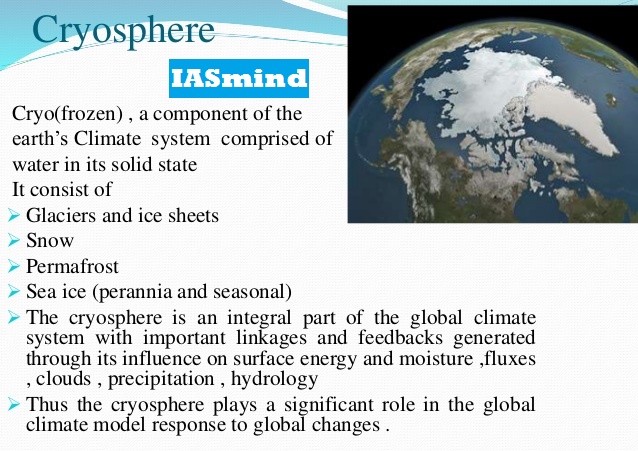Environment, Science and Technology: Trilok Singh, Dr. Ravi P Agrahari, IASmind, Ministry of Environment, Forest and Climate Change, YD
May Read, IASmind, Environment and Technology series
This is to bring your kind notice that mentioned titles is currently engaged with our research innovations and they all are parts of our world wide community to serve the free education, society at large. Please See, Environment, Science and Technology: Trilok Singh, Dr. Ravi P Agrahari (Scientist in IIT, Delhi), Ministry of Environment, Forest and Climate Change, YD. Added, Founder and CEO of IASmind, Mr. Trilok Singh.
“According to the 5th Assessment Report of the Intergovernmental Panel on Climate Change (IPCC), the cryosphere, comprising snow, river and lake ice, sea ice, glaciers, ice shelves and ice sheets, and frozen ground, plays a major role in the Earth’s climate system through its impact on the surface energy budget, the water cycle, primary productivity, surface gas exchange and sea level and is a fundamental control on the physical, biological and social environment over a large part of the Earth’s surface. Cryosphere is a natural integrator of climate variability and provides one of the most visible signatures of climate change. Observations show that there has been a continued net loss of ice from the cryosphere, although there are significant differences in the rate of loss between cryospheric components and regions.
Read Also, Global Environmental Crisis: Solution in Indian Philosophy and Culture
The Government has launched the National Action Plan on Climate Change (NAPCC) in June 2008 to achieve its goals and to deal with the issues related to climate change. NAPCC comprises eight missions in specific areas of solar energy, enhanced energy efficiency, sustainable habitat, water, sustaining Himalayan ecosystems, Green India, sustainable agriculture and strategic knowledge for climate change.
Read Also, How Will Private Spaceflight Companies Change The Development of Space Resources?
The National Mission for Sustaining the Himalayan Ecosystem (NMSHE) under NAPCC encompasses conservation measures for sustaining and safeguarding the Himalayan ecosystems through establishment of monitoring network, promotion of community based management, human resource development, and strengthening regional cooperation. Major initiatives include establishment of a Centre for Himalayan Glaciology at the Wadia Institute of Himalayan Geology, Dehradun”.
This information was given by Minister of State for Environment, Forest and Climate Change, Dr. Mahesh Sharma, in a written reply to a question in Lok Sabha On jan 05, 2018.
























